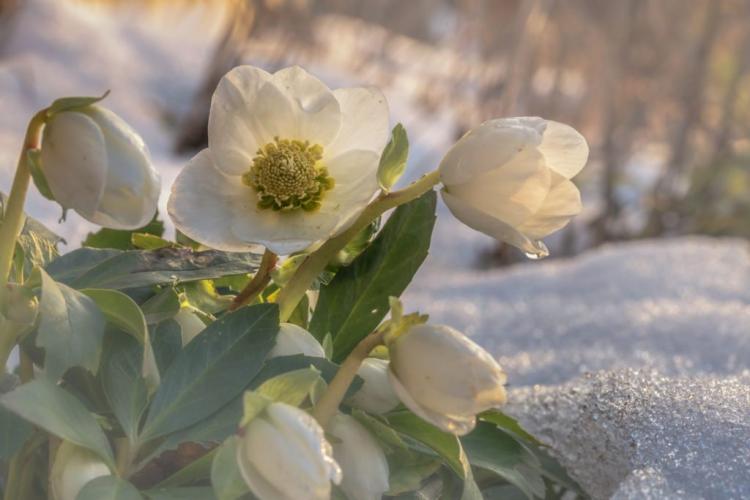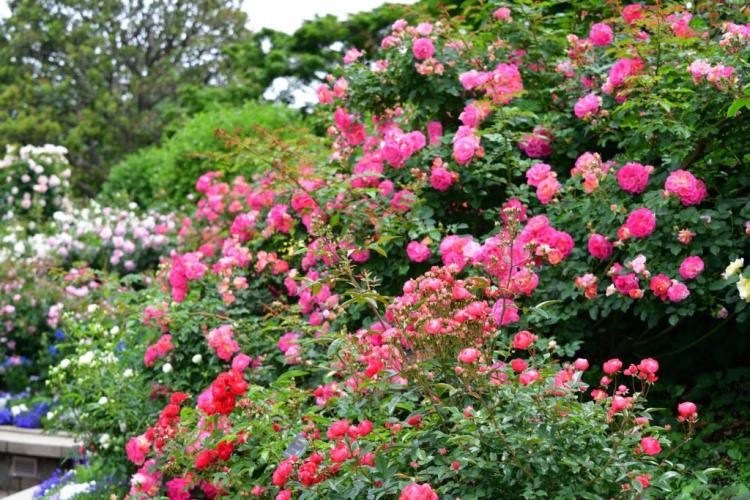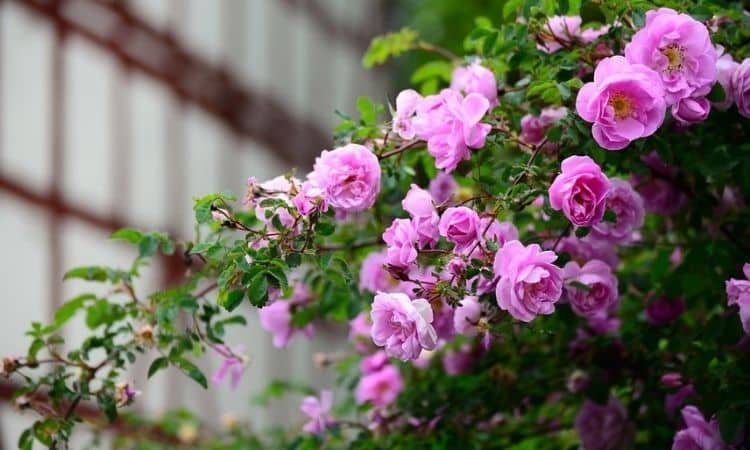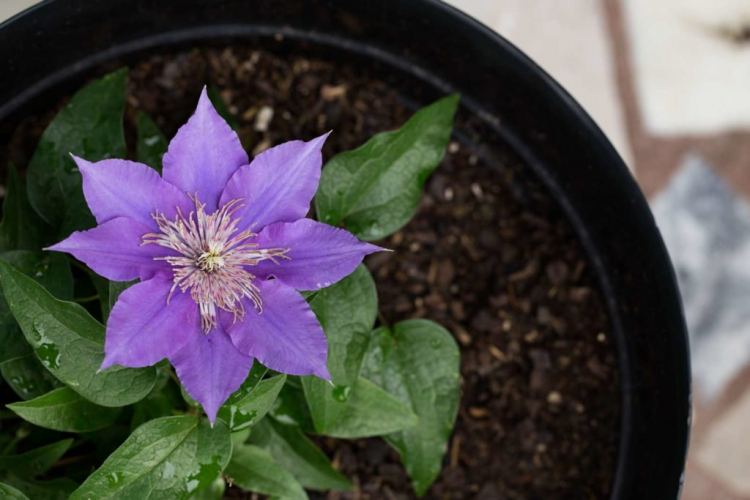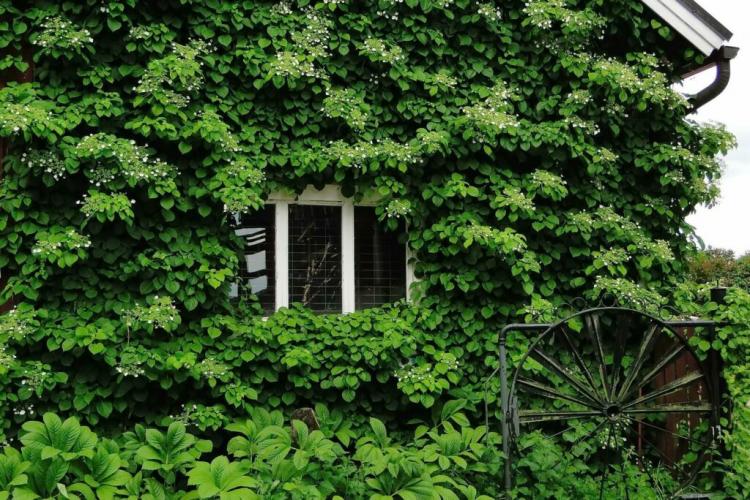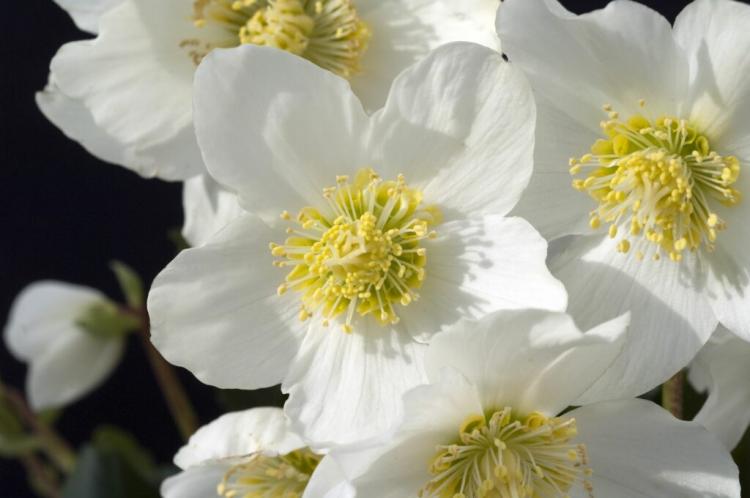Christmas Roses: Expert Tips On Care, Location And Buying
While other plants hibernate, the Christmas rose blooms. Here you can find out what you should know about planting and caring for Christmas roses.
The Christmas rose (Helleborus niger ) is one of the most popular Christmas plants and enchants us with its beautiful flowers in deep winter. The black hellebore, as it is also known, belongs to the buttercup family ( Ranunculaceae ). The perennial is best known for its early flowering time and is therefore wonderfully suitable for decorating house entrances or window boxes in the dreary winter months because it opens its flowers when many other flowers are currently in hibernation. If you don’t have a Christmas rose yet, you should now consider bringing this robust and easy-care ornamental shrub into the garden or on the balcony.
Some interesting questions – such as whether Christmas roses are poisonous and where they originally come from – we answer in this article. We will also introduce you to the most beautiful varieties of Christmas roses and explain what you need to consider when planting, caring for, and propagating the black hellebore.
Christmas roses: origin and meaning
Table of Contents
Perhaps you have already seen Christmas roses growing in the wild in nature. That would not be unusual, as some Helleborus species are also common in Europe. The ancestors of today’s Christmas roses come originally from Southeast Asia, from where they spread to the west along the shores of the original Mediterranean Sea after the height of the last Ice Age (around 20,000 years ago). Due to the constant temperature changes during this time, they probably developed their ability to postpone and even interrupt the growth and flowering period.
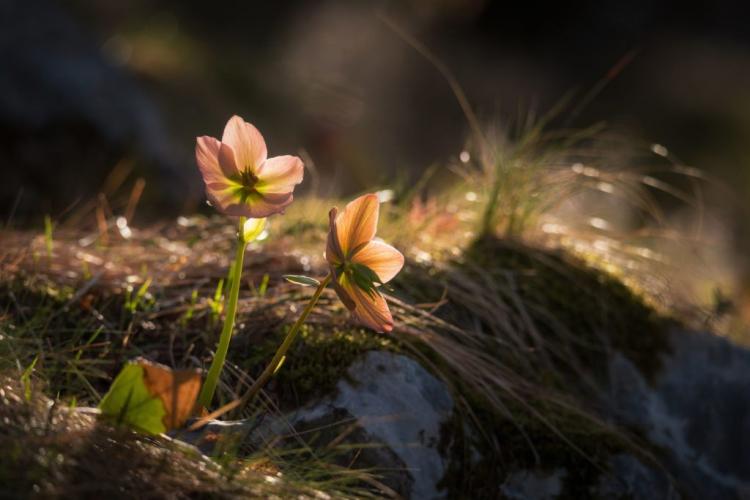
In Europe, Helleborus niger likes to colonize open forests
Helleborus niger is known by many different names. The literal translation of the botanical name is “black hellebore”, because the ground, black roots were used by rogues as sneezing powder. Since Christmas roses are poisonous, these fun activities could sometimes even be fatal – we therefore strongly advise against imitating them. The names “Christmas rose” are in turn due to the tradition of cultivating them in such a way that they bloom on Christmas, around the day of Jesus’ birth.
For a long time Christmas roses symbolized the release from fear and even the ancient Greeks knew about the healing properties of the plant. The phytotherapeutic is currently only used in homeopathy. Rather, the appearance of the Christmas rose in gardens and floristry is used today. The white flowers of the Christmas roses stand for hope and innocence. Some poems are also about the winter queen among the flowers.
Do Christmas roses bloom in summer?
The flowers of Christmas roses open when many other plants are just hibernating because Christmas roses need a cold stimulus for the flowers to develop. This phenomenon of the plant world is called vernalization. The main flowering time is therefore, depending on the variety, in the winter months between November and February. Some modern varieties, such as ‘Double Fashion’, bloom in mild years, but even into April.
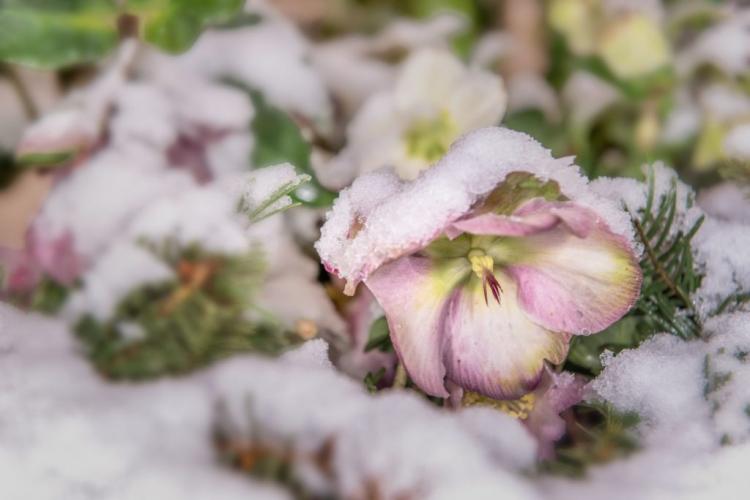
The white blossoms of the Christmas rose change color as it fades
The white or reddish bracts of the Christmas roses change their color as they bloom. They fade easily and then usually change from green to red. In this color, the flowers of the Christmas roses usually stay with us for a while. After flowering, the foliage adorns the garden – so the Christmas rose serves us as an ideal ground cover and gap filler over the summer months.
Types and varieties of Christmas roses
In addition to the actual Christmas rose ( Helleborus niger ), there are about 20 other Helleborus species, all of which are often incorrectly grouped under the name “Christmas rose” and are common in large parts of Europe and Asia. For example, the oriental hellebore ( Helleborus orientalis ), which is also called spring rose or spring Christmas rose, is very well known. Compared to Christmas roses, spring roses open their flowers a little later, namely in the period from January to March.
Basically, two groups of Helleborus can be distinguished: the stem-forming (caulescent) and the non-stem-forming (acaulescenten) species. As the name suggests, trunk-forming species are characterized by the fact that they form trunks above the ground. Furthermore, the rhizome is different from that of non-stem-forming species, which means that stem-forming species, in contrast to non-stem-forming species, cannot multiply by division.
While most of the Helleborus species belong to the non-stem-forming group, Helleborus niger occupies an intermediate position. The Christmas rose does not form any above-ground stems, but has differences to the other species of the Helleborastrum subgroup, which includes all non-stem-forming species with the exception of the Tibetan hellebore ( Helleborus thibetanus ).
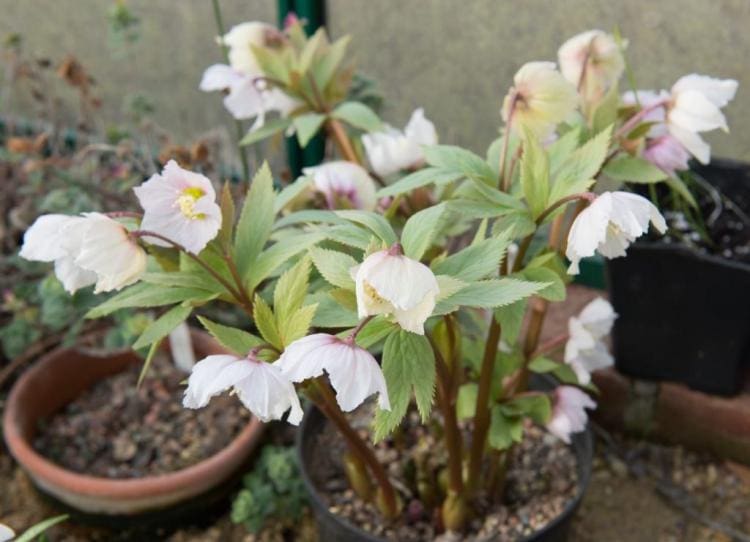
Helleborus thibetanus can only be found growing wild in China
- The species Helleborus niger, which is the main focus of this article, is further subdivided into different varieties. To make it easier for you to choose from this wide range of Christmas roses, we would now like to introduce you to some particularly beautiful varieties of Christmas roses.
- Helleborus niger ‘Christmas Carol’: pure white flowers with a yellowish-green center; Main bloom from January to March; clump-forming, spreading growth; becomes about 10 to 20 cm high; evergreen
- Helleborus niger ‘Double Fashion’: White Helleborus niger ‘Double Fashion’Weiße double flowers; blooms from December; reaches heights of growth of about 20 cm; suitable for sunny and partially shaded locations; very well winterized
- Helleborus niger ‘HGC Jacob Royal’: White flowers; blooms from November; strong and steadfast; medium-strong growth; suitable for partially shaded and shady locations; very good winter hardiness
- Helleborus niger ‘HGC Joel’: Plentiful, bright white flowers; blooms from December; compact, medium-strong growth; suitable for partially shaded and shady locations
- Helleborus niger ‘Praecox’: white, bowl-shaped flowers; Flowering time from November to January; bushy growth; becomes about 15 to 25 cm high; for partially shaded and shady locations; pretty tough
- Helleborus niger ‘HGC Jericho’: large-flowered variety; white flowers; blooms from December; dark green foliage; spreading growth; grows up to 30 cm high; suitable for partially shaded locations
- Helleborus niger ‘White Christmas’: Large, white, bowl-shaped flowers; becomes about 20 to 30 cm high; flowers from December to February; prefers partially shaded locations; suitable for pot culture
- Helleborus niger ‘Maximus’: large-flowered variety; simple, white flowers; Flowering time from November to February; spreading growth; becomes about 35 cm high; for partially shaded places
- Helleborus niger ‘HGC Joshua’: early flowering variety (November to December); white, bowl-shaped flowers; spreading growth; reaches heights of growth of up to 30 cm
- Helleborus niger ‘HGC Josef Lemper’: early flowering variety (from December); white, bowl-shaped flowers; medium-strong growth; becomes about 25 to 30 cm high; for partially shaded to shady locations
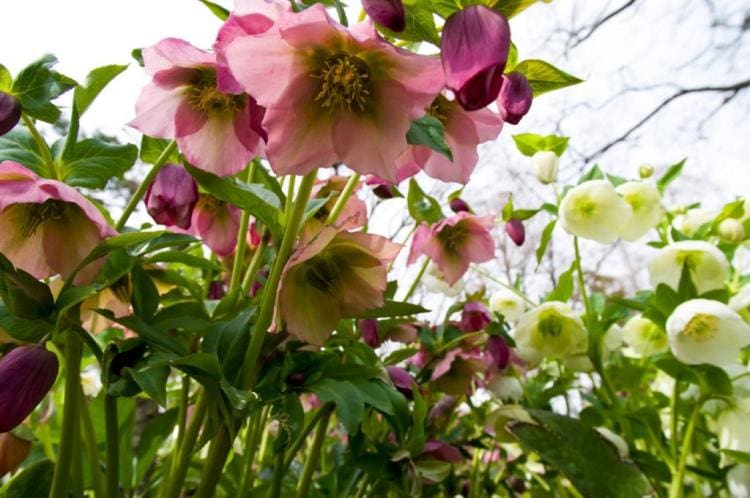
Lenten roses ( Helleborus orientalis ) come in many different color variations
It is best to plant Christmas roses in groups, then they are best shown to their advantage. If planted lightly, Christmas roses are also very suitable as an underplanting for shrubs or trees. Wonderful combinations can also be made with other spring flowers such as tulips ( Tulipa ), crocuses (Crocus ) or snowdrops (Glanthus). Appealing perennial beds can also be created in combination with cranesbill ( Geranium ), lady’s mantle ( Alchemilla ), or Columbine ( Aquilegia ).
Buy Christmas roses
Young Christmas rose plants can be found in many online shops. To get an idea for yourself, it is worth visiting a garden center or a nursery. Here, for seasonal reasons, Christmas roses are usually only offered for sale in autumn. In addition to choosing the right variety, you should make sure that the selected Christmas rose is healthy and strong because, despite its robustness, Christmas roses can be affected by fungal attacks.
If you can see black spots on the leaves of the plant or if the flower stalks are kinked at the base, it would be better to keep your hands off this specimen. Small crawling animals such as aphids, on the other hand, like to eat Christmas roses. Therefore, when buying new plants, make sure that you only select healthy specimens that are free from pests.
Planting Christmas roses
In the following we explain to you in which location Christmas roses feel most comfortable and what you should consider when planting so that your Christmas rose grows well.
Planting Christmas roses: the perfect location
Once you have selected a particularly beautiful Christmas rose for your garden, it is important to choose the right place to plant it. Basically, your Christmas rose must have enough space in the garden so that it can develop undisturbed. Locations with nutrient-rich, permeable humus soils with a slightly alkaline pH value of around 7 to 8.5 are ideal for Christmas roses. They feel most comfortable protected in partial shade under a tree. There the Christmas rose can enjoy the gentle rays of the winter sun in the cold winter months, but in summer it is protected from excessive heat.

Christmas roses feel most comfortable under trees
Planting Christmas roses: instructions
Once you have chosen the right location, you should plant out your newly purchased Christmas rose as soon as possible. The best time to plant Christmas roses in the bed is in autumn (September to November). Alternatively, you can plant in rougher locations in late spring (April / May). Make sure you keep a sufficient distance (around 35 centimeters) from other plants so that there is no competition for light, water and nutrients. With higher growing hybrids, you should keep a planting distance of about 50 centimeters.
Before inserting the root ball, immerse it in a bucket of water so that it can soak up. In the meantime, loosen the soil in the desired location and dig out the planting hole, which is about twice the size of the root ball. To ensure good starting conditions, it is best to enrich the soil with a shovel of compost and a handful of horn shavings.
Now take the soaked Christmas rose out of the bucket and plant it up to the root neck. Lightly press the soil with your hands to close any cavities. Then you should water the freshly planted plant well so that the soil can settle. To ensure that the conditions for the Christmas rose are evenly moist, you can finally apply a layer of mulch made of coarse compost or leaves. Now you have to be patient because with young specimens it can sometimes take one to two years before they bloom for the first time.
You should only transplant Christmas roses if absolutely necessary, because they usually do not tolerate a change of location very well. In the worst case, it can even lead to the death of the plant. If it is still unavoidable, the best time for this is autumn (September) or spring (March / April). The more root mass that is retained, the greater the chance of successful relocation. Also, make sure that the planting depth is maintained in the new location as far as possible.
Tip: To avoid skin irritation, you should definitely wear gloves when planting Christmas roses.
Planting Christmas roses in a pot
So that your Christmas rose grows well in the pot, there are a few aspects to consider when planting. Christmas roses are deep-rooted, which is why you should choose a sufficiently large planter for your darling. First and foremost, a drainage layer is placed in the pot so that excess irrigation water can drain off. In this way, waterlogging can be avoided.
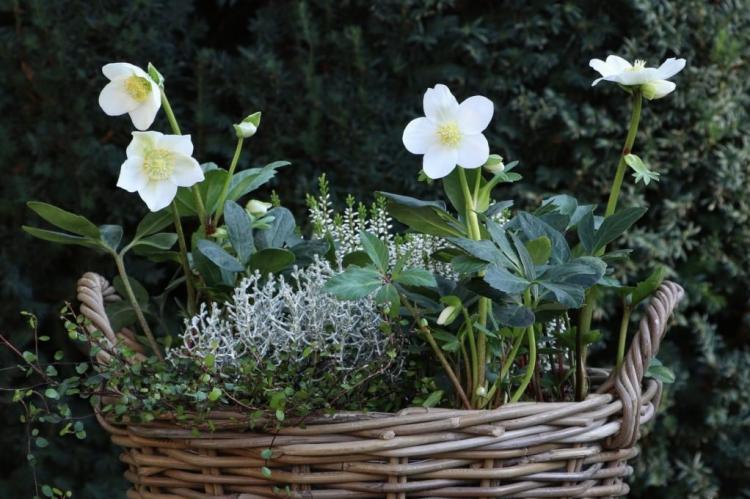
In a sufficiently large pot, Christmas roses also thrive wonderfully on the balcony or terrace
High-quality potting soil is suitable as a substrate. It provides your Christmas rose with ideal nutrients and can be made a little more permeable by mixing it with sand. Once the Christmas rose has been planted, a partially shaded spot on the balcony or terrace is a wonderful location.
From then on, you should take good care of your darling, because Christmas roses have slightly higher care requirements in pots than outdoors. In addition to regular watering and fertilization, sufficient frost protection must be ensured so that the roots in the pot do not freeze through in winter. Here we explain to you which varieties are suitable for potting, how exactly you should plant them and what you need to consider when caring for Christmas roses in pots.
Propagate Christmas roses
If you can’t get enough of Christmas roses, you should consider propagating particularly beautiful ones yourself. Probably the simplest method is to divide the roots after flowering in spring. To do this, first, tie the leaves together loosely with raffia and then push a pitchfork through the center of the root ball. A second pitchfork is then placed just below the first.
Now gently move both pitchforks back and forth to split the rhizome. Make sure you dig the Christmas rose deep enough so that as much root material as possible is retained. Then plant the new plant directly at its new destination and water it well. By the next season, the Christmas rose should start to bloom again.
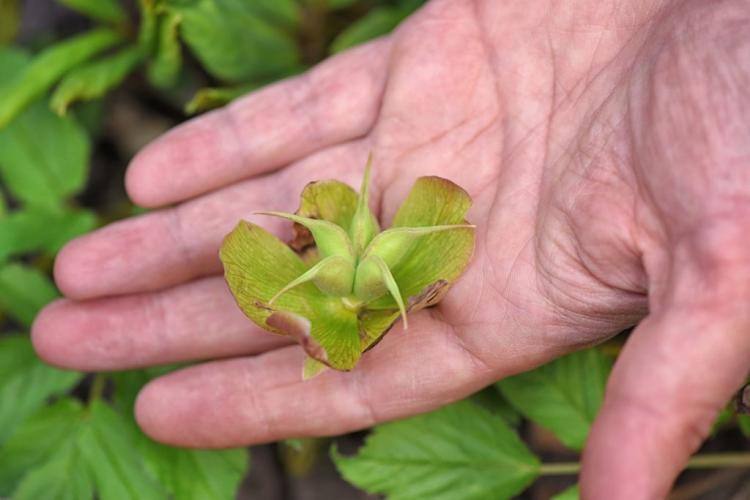
The seeds of Christmas roses are found in follicles
Alternatively, you can also use seeds to propagate your Christmas roses. A single variety propagation is not possible as a result. In addition, this method of propagation is very time-consuming and labor-intensive. If you still want to take on the effort, take the seeds from the ripe fruits in early summer.
Fill a freezer bag with damp sand and then place the seeds in the refrigerator for about four to six weeks before sowing them. This so-called stratification of the seeds is necessary because Christmas roses are cold germs. You can achieve a similar effect if you place the seed pot on the balcony over the winter. Alternatively, you can simply bloom the Christmas roses in the bed and let the follicles burst. You can look forward to the first seedlings next spring. The first flowers are usually still around three to four years away.
Caring for Christmas roses
When the Christmas rose has grown well, it makes hardly any demands on its care compared to other ornamental perennials. Adequate watering should be ensured during the flowering period from November to February. But even outside of the flowering period, the root ball should of course not dry out completely. So keep an eye on your Christmas rose even during the summer months so that you can water it if necessary.
A mulch layer made of compost, leaves or grass clippings not only keeps the moisture in the soil, but also provides your Christmas rose with nutrients. Regular pruning is not necessary for Christmas roses. In early summer (May) simply cut off the withered flower stalks so that the Christmas rose does not invest its energy in the formation of seed heads. The old leaves are only removed when they have been completely pulled in.
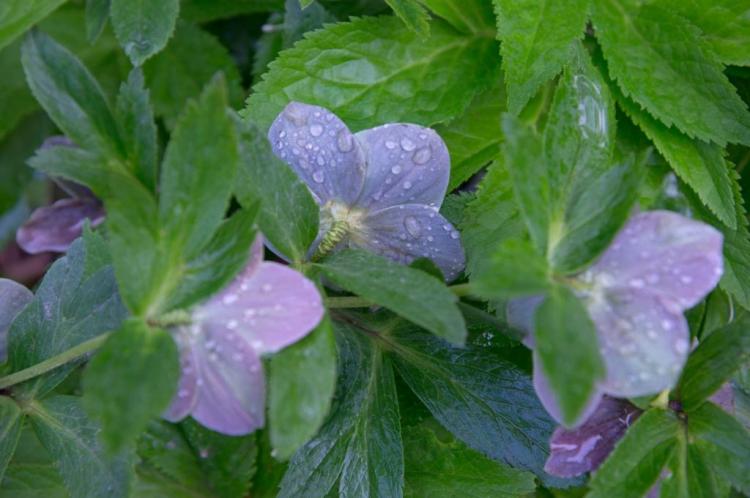
A sufficient water supply is essential for the good development of the Christmas rose
You can also read everything about the topic of “caring for Christmas roses” in our special article.
Common diseases and pests in Christmas roses
Unfortunately, even the robust Christmas rose is not immune to infection with plant diseases and pests. We have therefore put together an overview of the most important diseases and pests on Christmas roses for you:
Black spot disease
As the year progresses, black spots often appear on the leaves of Christmas roses. These are caused by a fungus long known as Coniothyrium hellebore, but the exact origin of the pathogen is still the subject of research. According to more recent findings, it is, therefore, more likely to be assigned to the genus Phoma or Microsphaeropsis .
You can recognize the so-called black spot disease by the irregularly round black spots that appear especially on the edges of the leaves. A particularly strong infestation can lead to the death of the leaves and should therefore be treated as soon as possible. To do this, remove the old diseased leaves. To prevent further spread of the leaf spot disease, do not dispose of the planting material on the compost, but in the residual waste.
Too low a pH in the soil, an oversupply of nitrogen, and persistently moist leaves can promote fungal infection. You should therefore always ensure that the location conditions are optimal so that your Christmas rose lacks nothing. If the worst comes to the worst, fungicides are also available but should be used as soon as the first symptoms appear to achieve an ideal effect.
Rhizome and stem rot
If the shoots of your Christmas rose to snap off the ground in spring for no apparent reason and show brown to black rot at the base, this is probably due to the so-called rhizome or stem rot. Various fungi, such as Pythium, Phytophthora, or Rhizoctonia, can be responsible for this. Unfortunately, it is hardly possible to combat these pathogens. You should therefore prevent the disease by planting the plant in well-drained soil, as persistent waterlogging can encourage the appearance of these fungi.
Aphids and snails
In addition to fungal diseases, pests can also attack your Christmas rose. Aphids like to eat the leaves of the Christmas rose in the truest sense of the word. But they do not pose a real threat to the plant. If you still want to do something about it, you can spray the infected leaves with a self-made nettle broth or an organic preparation from a horticultural specialist.
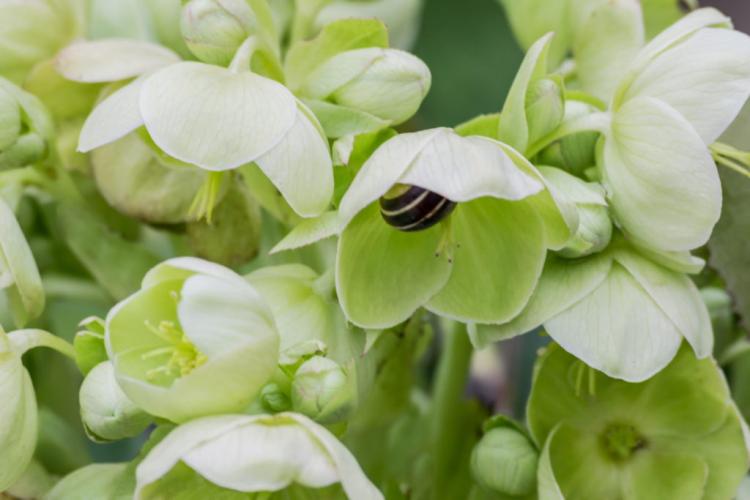
Snails also love to nibble on Christmas roses
Snails, on the other hand, like to nibble on young cotyledons and leaves, so that hardly anything remains of the plant. For the sake of the environment, you should use biological means to control snails.
Are Christmas roses poisonous?
Yes, all plant parts of Christmas roses are poisonous and therefore not suitable for human consumption. Various toxic ingredients are responsible for this, such as the protoanemonin found in buttercups. In the Helleborus genus, the heart poison Helleborin and the powerful steroid saponin Helleborin are added. The roots are particularly poisonous, so poisoning by snow roses is rarely observed. However, leaking sap from gardening can cause skin irritation.
Therefore, always wear gloves when handling Christmas roses, and do not touch your face while gardening. With pets, puppies and kittens are particularly at risk, as they could eat the toxic seeds and roots out of curiosity.
You might so like:
